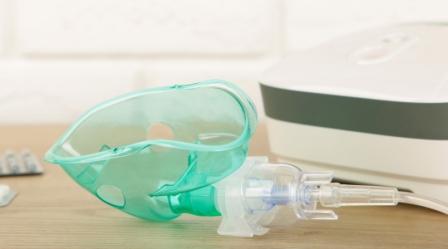The nebulizer is a device for the supply of a drug-derived gaseous substance to the respiratory tract. When using the device can become clogged, so users need to know how to clean the nebulizer. In this case, certain rules must be observed, with which the nebulizer itself will not be damaged, the patient will not have adverse reactions to the component of the solution.
content:
- Consequences of not cleaning the nebulizer
- Cleaning rules
- Cleaning solutions
- Summary
Consequences of not cleaning the nebulizer
If the device is used for a long time, pathogens will accumulate inside while not cleaned. It can be bacteria and viruses. During the use of the nebulizer, they will spread inside the respiratory tract. This is dangerous by the appearance of bacterial and fungal infections. Therefore, you should consult your doctor after learning how to disinfect the nebulizer.
Since nebulizers distribute the gaseous substance to the lowest parts of the lungs, pathogens will also get there. This increases the risk of bronchitis and pneumonia.
Cleaning rules
In the process of cleaning, the nebulizer should be washed and sterilized, not all its components. This action is subject to:
- Mask or tube (mouthpiece) for inhalation;
- The tube that connects the mask and the container;
- The capacity to which the medicines are placed, as well as the lid to it;
- tube through which gas is supplied from the machine.
Inside the nebulizer is a filter in the form of a sponge. It traps some substances that get there from the air. It is also contaminated during use. It is recommended not to clean it, but to replace it with a new one.
The process of simple cleaning of the nebulizer takes place in several stages.
- Pre-disassemble the nebulizer, remove it in the direction of the block, which is not subject to cleaning.
- Wash your hands thoroughly with microbicide soap.
- How to clean the nebulizer: wash all the parts alternately with running warm water. Use soap solutions is prohibited.
- Spread all the details over the waffle towel to make the glass liquid.
If you need deep nebulizer disinfection, the sequence changes.
- All the details of the nebulizer are laid out and placed in the basin.
- Pour a special solution for cleaning, in which the parts are soaked for 20 minutes.
- Washing every part with running warm water
- Mark every detail on the towel, let dry.
The care of the nebulizer will prolong its life. You need to know how to clean the nebulizer without damaging it.
Cleaning Solution For Nebulizer

Cleaning the nebulizer, using not conventional soap solutions, and specialized means not harming the person’s respiratory tract.
Gigaset Instru AF.
A disinfectant designed for medical instruments. It is prepared to destroy most pathogens, including hepatitis, tuberculosis, bacteria, mushrooms. Disinfects quickly enough, within 30-40 minutes. It can irritate the skin and respiratory organs.
Ecocide C.
A disinfectant with a wide range of antimicrobial action. Effective against bacteria, viruses, fungi, and even plague. Powder or solution can cause allergic reactions, irritation when it hits the skin. Possibly tactical pores.
Septodont Forte.
A disinfectant that applies to most pathogens. Yes, including bacteria, HIV infection, other viruses, fungi. It is used in medical and preventive institutions. For full disinfection, it takes quite a long time, for 1 hour. The remedies are toxic, can cause allergic reactions.
Peroxymed.
The tool includes hydrogen peroxide and corrosion inhibitors. To completely disinfect from all pathogens takes 2 hours, which is much more than other means. The solution is active against bacteria, viruses, including hepatitis, fungi. It is used for pharmacies. It is not used in health care, as it is not active in HIV infection.
When using special solutions for disinfecting the nebulizer at home, it is necessary to consider the presence or absence of allergies in the patient. If there is an increased sensitivity to one of the components of the product, a person may develop anaphylactic shock, swelling of Kwinke, and other strong reactions. It would help if you were careful, know how to clean the nebulizer without harming yourself.


